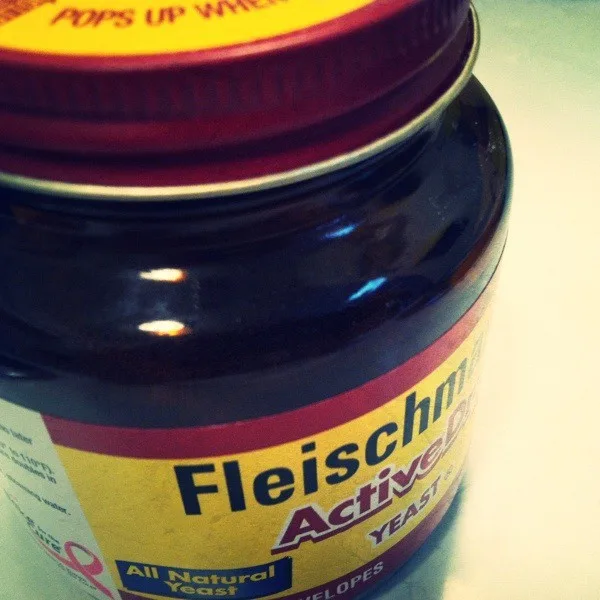It’s time for another installation of everyone’s favorite series…Back to Basics! For those of you who are just joining us, this is a series that will cover a variety of topics, but all of them will deal with cooking or baking situations that, although they seem like they might be intuitive, can actually be quite confusing, especially for the beginning cook. And today’s topic…yeast!
__________________________
Yeast.
It’s one of my favorite things to work with in the kitchen, and one that provokes the most fear and suspicion from a lot of home cooks. So while I have touched on the topic of yeast in previous “Back to Basics” posts, I would like to devote a whole week to learning about yeast and sourdough.
So why not make a resolution to make this the year you learn how to bake your own bread? After tasting your first slice of fresh bread, still warm from the oven, you’ll know that that’s a resolution you will want to keep.
And while we are learning to bake bread, why not get our kids involved? Teaching your kids about yeast could be a really great way to get them interested in baking. Frankly, yeast can be kind of creepy! Kids – especially boys – love that kind of stuff.
Let’s start off by explaining exactly what yeast is and how it works.
Yeast, believe it or not, is a fungus. Yep, it’s a living organism (a eukaryotic microorganism to be exact)! Creepy, right? Maybe, but also kind of cool, because it is the live nature of yeast that causes dough to rise. How does this work?
Through a process of fermentation, yeast feasts (look a how I rhyme!) on the sugars in your bread dough and releases gases in the form of carbon dioxide, which leaven the bread with small pockets of air.
Pretty basic, right? Not so scary at all.
But wait. There are different types of yeast. How are they different and how are we supposed to know which one to use?
Fresh yeast (sometimes called “cake yeast”) is exactly what the name implies: yeast that is fresh, active and ready to go. As I’ve put it before, it’s already alive and kickin’! It is sold in a brick and only needs to be combined with some tepid water in order to be used. The problem with fresh yeast, however, is that it has a very short shelf life and must be refrigerated. Outside of the refrigerator or past its expiration date…and you’ve got some dead yeast on your hands. No good.
In order to alleviate the problems that arise (see what I did there? Arise…rise? Ok…never mind. Moving on…) with fresh yeast, active yeast, or active dry yeast, was developed.
Active yeast is yeast that has been put into a sort of suspended animation. It comes in a dry, granulated form, and does not need to be refrigerated prior to purchasing – although open packages should be stored in the refrigerator. The fact that active yeast is dormant also significantly prolongs its shelf life – although not indefinitely. In order to use active yeast in a recipe, it needs to be activated – or brought back to life – in a weak solution of warm water (between 105 and 115 degrees) and sugar. You can read more about activating yeast in Reading Recipes (Part 2: The Instructions).
Rapid rise yeast (or instant yeast) is similar to active yeast in that it is also dormant with a long shelf life, but unlike active yeast it absorbs liquid rapidly and does not need to be rehydrated before using. It is often used in bread machine recipes for this reason.
As I mentioned in Reading Recipes (Part 1: The Ingredients), really good bread recipes will specify what type of yeast should be used. Fresh yeast is very uncommon anymore – active yeast has really taken over as the go-to yeast in most bread recipes. If the ingredients do not specify, take a look at the instructions; if the instructions include the activating process, you need to use active yeast. If they skip activation and tell you to mix your yeast directly into your dry ingredients, you will need to use rapid rise yeast. If the instructions tell you to “proof” your yeast in tepid water without any sugar, that recipe is calling for fresh yeast. Got it?
See? Working with yeast really isn’t as scary as most people think that it is. Bottom line – and what I always tell people who are nervous about working with yeast for the first time – you have to believe in your yeast. All you have to do is give your yeast the proper environment in which to flourish: activate it with warm, not hot, water and let your dough rise in a warm place. I will often cover the dough lightly with a clean towel and place it in the oven with a bowl of boiling water. This will create the perfect environment for your dough to rise, even in the dead of winter when your house might be freezing cold. Other options include placing it on top of a running clothes dryer, or even in the bathroom (especially if someone has just taken a hot shower) with the door closed.
If you are interested in trying your hand at working with yeast, here are a few great recipes that utilize this crazy stuff:
Later this week we will continue this lesson by learning about sourdough! So stay tuned…
________________________
Would you like to know more about how I use specific ingredients, or do you have a “Back to Basics” topic that you’d like to see me cover? Maybe you’d like to know how to properly cook rice, or the difference between baking powder and baking soda. Leave me a comment or shoot me an email and I will see what I can do!


This is some great info! I’m glad you mentioned fresh yeast. I have a lot of older recipes that call for “yeast cakes” and I honestly never knew what they were. And P.S. can not wait for the sourdough lesson! I have been itching to make a french onion pizza with a sourdough crust but the whole starter thing has me confused. 🙂
Oh my goodness that sounds amazing! Ok, here’s the deal: I’ll help you get that starter going if you share that recipe once you make it 🙂
Deal!
I’m so excited for this week! 🙂
Love these posts and I always love using yeast!!!
Wait wait wait. You are leaving out the best thing you make with yeast – BEER! Bread is great, but yeast was originally created to make beer…I think it even says so in the Bible! (j/k). Thanks for the lesson.
Oh yes, in the addendum to Genesis chapter 1: “And then, after creating man, God said, ‘Let there be yeast, and let it be used for the production of beer.’ And it was good.”
Sigh…I needed this post! My yeast knowledge is atrocious…I had always wondered the difference between all the yeasts and never took the time to figure it out. Bravo, lady! And yes, I’ll be making all your yeasty treats to go with my new knowledge!
Glad I could educate! 😉
Whoa captain smarty pants! Great info, can’t wait to meet your starter!
If only I had studied food in college, I could say these posts are my $40K/year education being useful 😉
I’m obsessed with this post!!! LOVE all the info! I pretend like I know what I’m doing with yeast… but I don’t. 🙂 And sourdough is maybe my favorite bread! Can’t wait to see the next one!
There really is nothing quite as wonderful as the smell of fresh yeast dough in the kitchen.
Amen, sister.